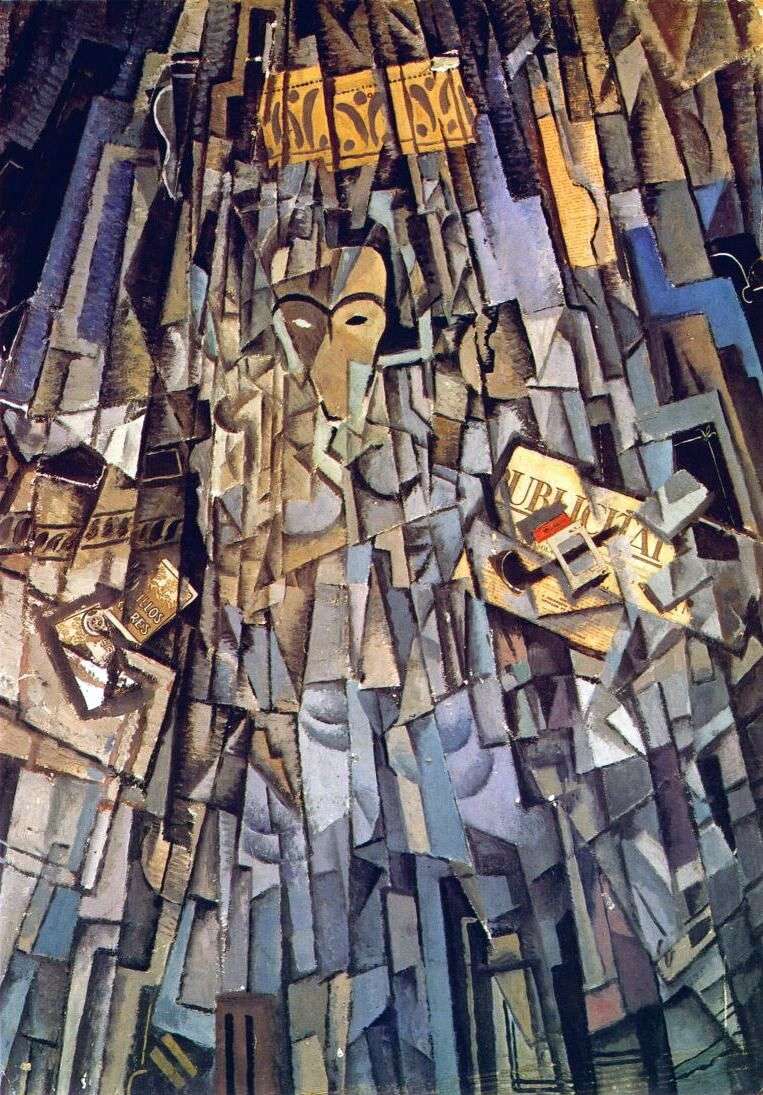
Color range from golden to purple; the image is decomposed on the verge, is made up of them. Vertically oriented canvas, flowing from top to bottom vertical strokes. The image is as if stretched along the ordinate axis to emphasize the characteristic features of Dali’s figure: tall, lean. In this kaleidoscope of faces are inscribed objects complementing the image of the artist: newspaper, cigarette pack, – dandy attributes.
The center of the composition is a narrow “demonic” face with laconically but precisely marked recognizable features. Frowned eyebrows. Smooth, parted black hair. A thin nose, only indicated by a vertical line. Slit slightly slanting eyes. One eye socket is like a white blinding light. The second is an impenetrable black hole. This technique emphasizes the duality of Dali’s character.
One part of the restless nature of the artist has always been turned outward. Dali liked to “play the audience,” to shock the people around him, to attract attention. Was he an extrovert? Probably not. This posturing was the mask of a painfully shy, deeply insecure person.
The other part was turned inwards. He cherished his numerous complexes, was inclined to endless self-interest, an analysis of his actions. Dali repeatedly wrote self-portraits. His appearance was the same recognizable brand as a soft watch, a crutch-support or a phallic-shaped bread.
At the same time, he turned to various techniques and styles. In the early period of his work, being under the strong influence of avant-garde artists, he wrote several pictures, following the canons of cubism. “Cubist self-portrait” refers specifically to this period.
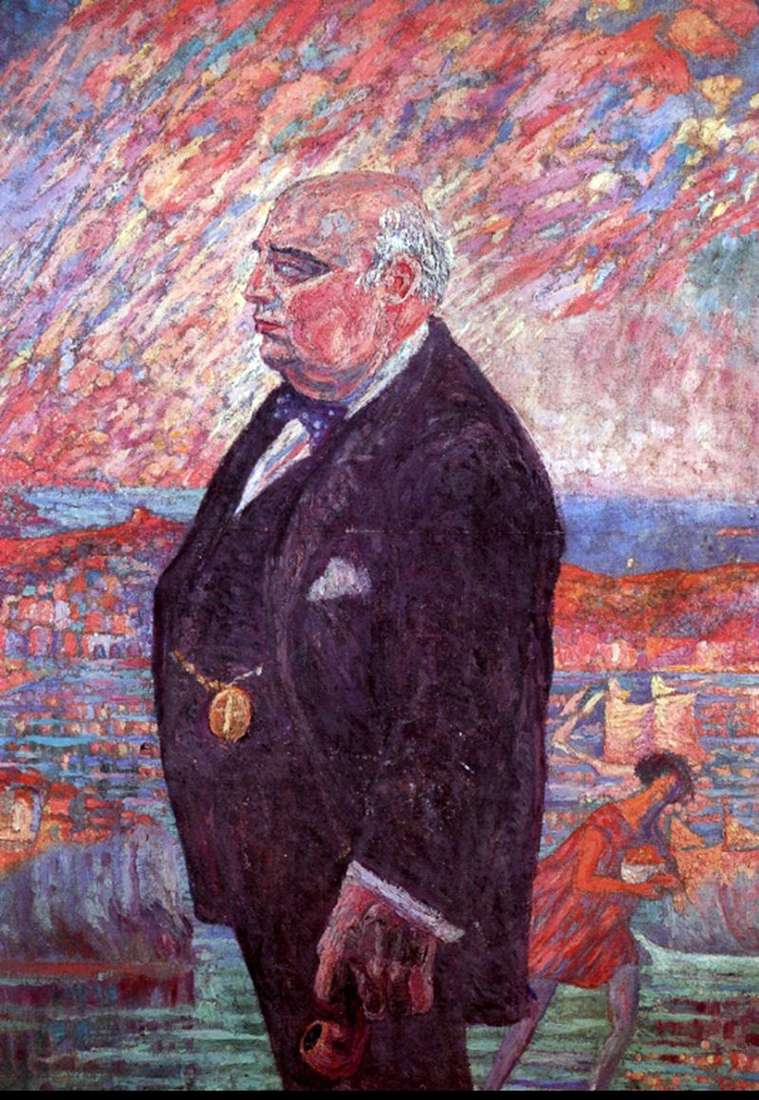 Portrait of my father by Salvador Dali
Portrait of my father by Salvador Dali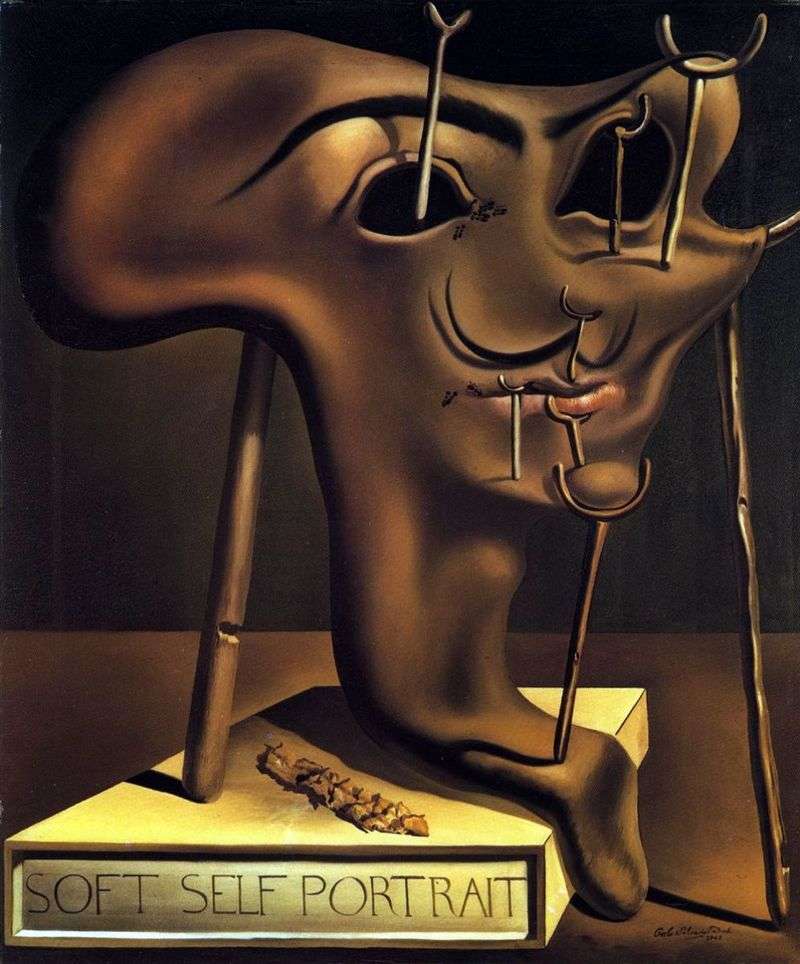 Soft self-portrait with fried bacon by Salvador Dali
Soft self-portrait with fried bacon by Salvador Dali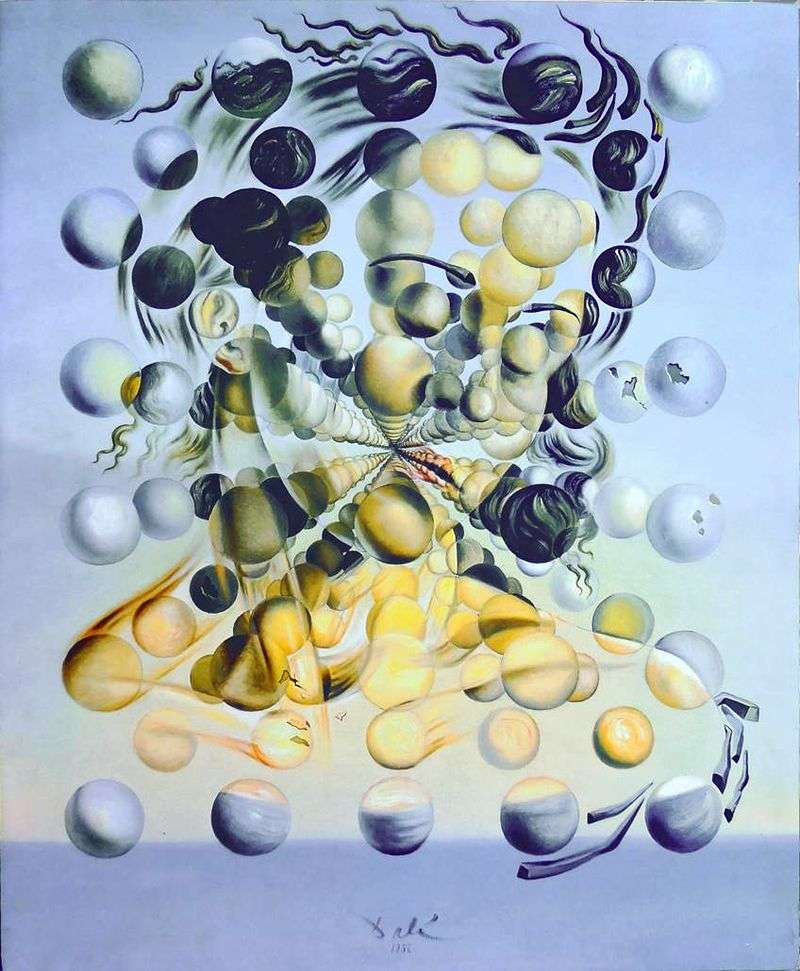 Galatea spheres by Salvador Dali
Galatea spheres by Salvador Dali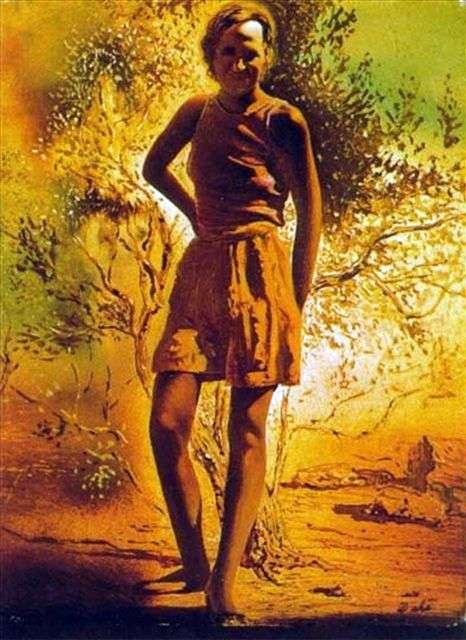 Portrait of Galya on a summer day by Salvador Dali
Portrait of Galya on a summer day by Salvador Dali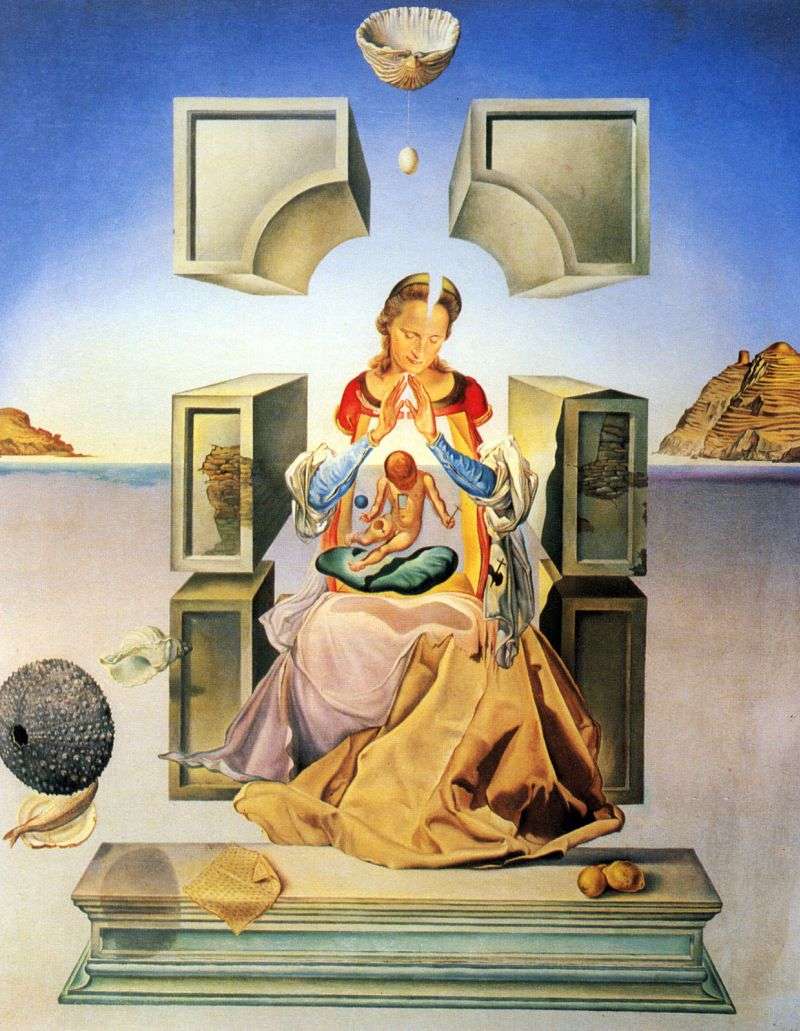 Madonna of Port Lligata by Salvador Dali
Madonna of Port Lligata by Salvador Dali Ghost and illusion by Salvador Dali
Ghost and illusion by Salvador Dali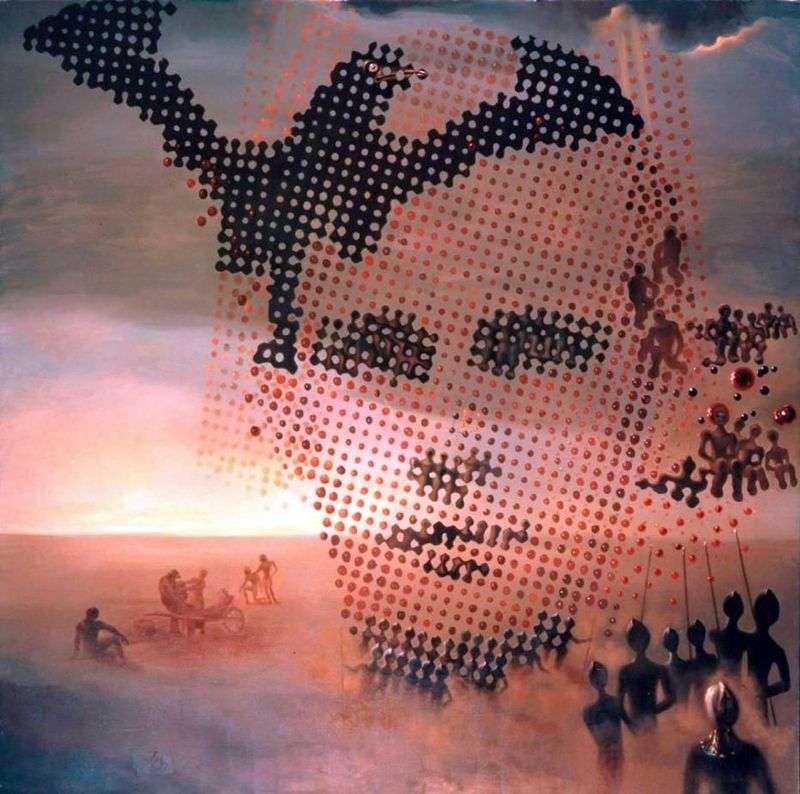 Portrait of my deceased brother by Salvador Dali
Portrait of my deceased brother by Salvador Dali Atavistic ruins after the rain by Salvador Dali
Atavistic ruins after the rain by Salvador Dali